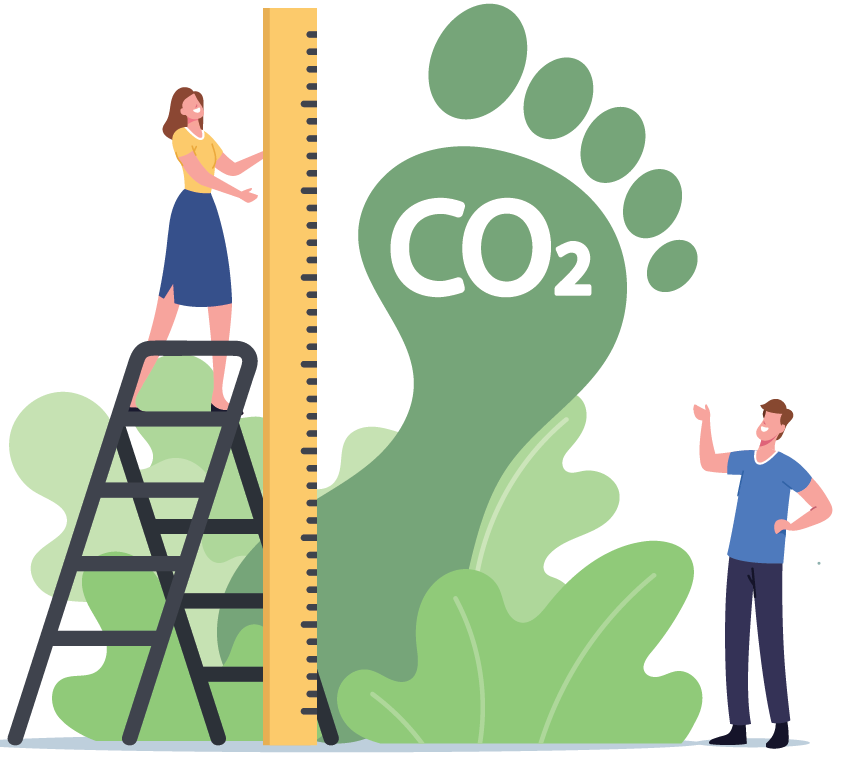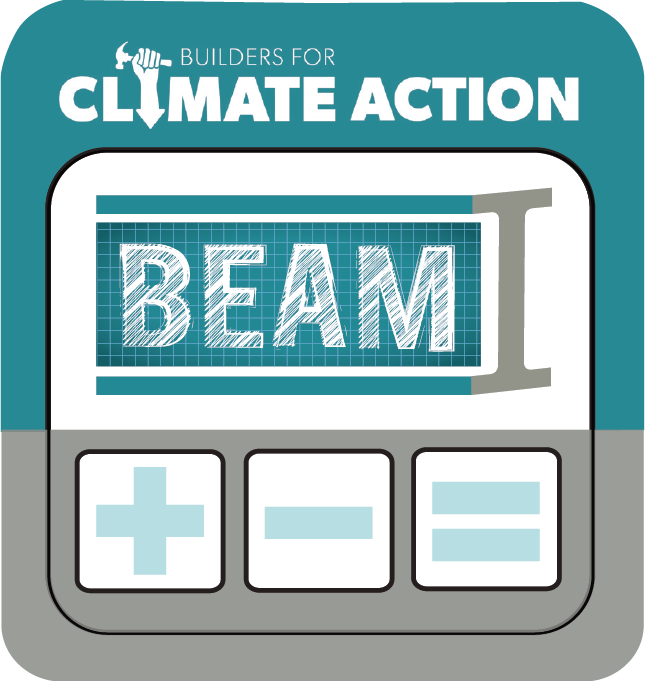Calculating the carbon footprint of building materials
The BEAM Estimator helps architects, designers and builders quantify embodied carbon.
By Dan Kolbert
¨What’s your number?” is a regular column that showcases a different home performance number–why it matters and the factors in choosing it–in each issue of Green & Healthy Maine HOMES. We welcome your comments and feedback.
THIS ISSUE’S NUMBER concerns our most looming environmental threat: carbon dioxide (CO2). In 2021, the Mauna Loa Observatory in Hawaii measured atmospheric CO2 at 415 parts per million (ppm)—well past the 350 ppm threshold needed to avoid catastrophic global warming.
Since housing has been estimated to account for as much as 40% of the United States’ carbon load, figuring out how to reduce it involves developing ways to measure it. A remarkable new tool—the BEAM estimator—can help us with some of the thorniest parts of this analysis.
Operational load vs. embodied carbon
Measuring what we call the operational load is relatively simple. That involves looking at all the energy consumed by occupation of a house, including the heating and cooling equipment, the water heater, the television, kitchen appliances, hair dryers and anything else that plugs into the wall. Different fuels (like electricity, oil, gas and wood) have different impacts, but we can convert them all into the same units to come up with a meaningful number.
Measuring the carbon that goes into building a house is much more complicated. There are hundreds, if not thousands, of different materials and assemblies, with multiple variations. Your plywood sheathing could have been manufactured 50 miles or an ocean away. Insulation can contain greenhouse gases that are far more potent than CO2. The energy consumed at the factory could come from a coal-fired plant or a cleaner source.
How do we make sense of all that? The answers are slowly getting standardized. More and more manufacturers are releasing Environmental Product Declarations (EPDs). These EPDs give detailed Life Cycle Assessments (LCAs) of a material or manufactured good’s composition and its impact in its manufacture, use and end-of-use disposal.
the BEAM estimator
But even with that, it is a daunting, if not overwhelming, task to collect all the EPDs, calculate their combined impacts, and arrive at a meaningful number. To address this, a small, all-volunteer group came together through Builders for Climate Action to create a tool that could automate the process. Their solution is the Building Emissions Accounting for Materials (BEAM) estimator, a complex spreadsheet connected to an encyclopedic database of EPDs. And since their goal was to make it universally available as a tool to fight global warming, they have made it free to everyone (with suggested donation levels gratefully accepted).
By entering the basic dimensions of the building, from the size and total length of the footings under the foundation to the square footage of the roof, a user can easily calculate the carbon impact of various choices and compare different ways of building the same house. Some conclusions are unsurprising: items made from minimally processed trees, plants and fibers have a much lower impact than complex, petroleum-based products. Some are less obvious—the impact of a metal roof may be far greater than an asphalt one.
I spoke about the new tool with one of BEAM’s authors, Jacob Deva Racusin, a tireless advocate for smarter solutions to the environmental crisis. In addition to his work onBEAM, Racusin has written several books on building and building science and is a founding owner/member of NewFrameworks, a cutting-edge design/build co-op in northernVermont. BEAM’s target audience, he says, is small to mid-sized designers and builders. They have not been well served by more complex material analysis software like BuildingInformation Modeling (BIM). And carbon storage, a critical part of any solution, was not a big enough part of any of the existing models.
Early use of BEAM is already showing “very specific comparisons in early-phase modeling,” Racusin says, meaning that people are using it to make the lowest-impact (or even negative impact) choices among various versions of a building.
Racusin identified several areas of “best use” for the estimator:
Direct product comparison: You don’t need the real dimensions of a building to see the comparative impact results as a way to improve best operating practices. There’s the ability to do a series of rapid assembly comparisons, with close to instant feedback. In about 15 minutes you can determine how a double-stud wall stacks up against fiberboard on a single-stud wall, regardless of dimensions.
The ability to establish data-driven quantifiable results at the conception of design. Modeling for energy consumption or carbon intensity usually has to wait until quite late in the design process. BEAM’s simplicity and level of detail makes it easy to make decisions early on about wall assemblies, siding or foundation details, when it is still possible to make changes easily.
Builders for Climate Action will be able to build an enormous library of buildings using various products and assemblies, and cull from that the best, easiest, most economical ways to lower or balance the carbon load of buildings.
Racusin warns against getting too caught up in the accuracy of any one number. The variables are still enormous, and he estimates that the numbers are accurate“plus or minus 20%.” In addition, measurements are also only “cradle to gate,” meaning that they follow a product from raw material extraction through processing and manufacturing, but the measurements stop once the product leaves the factory gates for a distribution center or job site.
As Builders for Climate Action’s website explains, “We choose this focus because this is where the vast majority of life cycle emissions occur for building products, and they have an immediate impact on our climate. At this product level, we hope to empower BEAM users to make the biggest impact in the place on the life cycle where we have the most leverage.”
When I asked Racusin what lessons he’s already learned from using the estimator, he talked about how easy it is to dramatically slash the impact of the building. Stripping 80% of the carbon impact turns out to be relatively simple through better product selections, different assemblies of framing, insulation and materials, and so forth. On the flip side, he’s realized “how challenging it is to get to true net-zero carbon—I have seen that last 20% being a far reach.”
Looking ahead, Racusin sees plenty for BEAM to expand.The whole world of heating, cooling, electrical and plumbing is very hard to measure—the sophisticated equipment used has thousands of components of unknown makeup and origin. Similarly, there are limitless finishes on the market, and their off-gassing can be trivial or huge. To add this kind of information, what is mostly lacking is funding, so Racusin hopes that users who are able will chip in when they use the estimator.
This is a make-or-break moment for homebuilding. We have largely ignored the enormous impact of the building process itself, focusing on reducing how much energy it takes to keep an occupied house comfortable. The BEAM estimator has the potential to remake that equation.
This article appeared in the Fall 2022 edition of Green & Healthy Maine HOMES. Subscribe today!
Find Maine experts that specialize in healthy, efficient homes in the Green Homes Business Directory.





